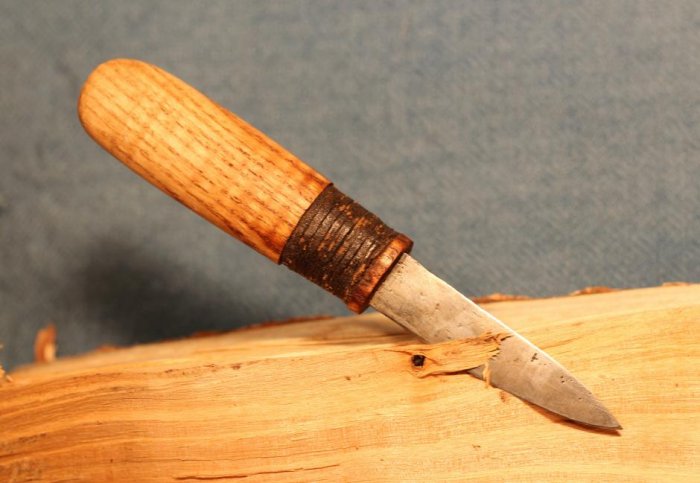Viking Children Were Buried With Extremely Sharp Knives – Afterlife Tools To Be Used In Valhalla?
Ellen Lloyd - AncientPages.com - Like many other ancient civilizations, Vikings had very several interesting burial customs.
Some Vikings' burial traditions are understood, but there are also certain aspects of the Norse culture we don’t yet fully comprehend.
Left: Credit: Imdb - Right: Gordito1869 - CC BY-SA 4.0
There is archaeological evidence Vikings used to bury their children with extremely large and sharp knives. The purpose of placing these artifacts in the tombs is not entirely clear, but one possibility is that the knives should help the little ones in their afterlife.
Nevertheless, this discovery is surprising to archaeologists, but it confirms the theory that the line between childhood and adulthood was very thin during the Viking Age.
The graves of the Viking children were found at Langeland and Lejre in Denmark. Scientists were able to determine the buried children are between 4 to 6-year-old and the graves are dated to the period from 800 to 1050 A.D. Examination of the artifacts discovered inside the tombs reveal the knives are made of steel and are very sharp. They seem almost too large to be used by small children, and yet they were placed there alongside these small bodies.
Life for ancient Viking children was different. Viking children did not have much time to enjoy their childhood. Work, learning, duties, and responsibility started at a very early age and there was not much time for playing games, but this does not mean it was boring to be a Viking child.
Based on the findings of these knives, researchers think that very young children used to walk around carrying a knife attached to their leather belts.
Associate Professor of Archaeology at the University of Copenhagen is convinced the knives were not toys, but tools. To the Vikings, the knife played an important part in daily life, and this also applied to the children. The knives in the children's graves also show that the knife has been something that followed people from childbirth and throughout life, says the archaeologist.
Unfortunately, our knowledge about Viking children is very limited because few child graves have been unearthed so far. Children are also not mentioned often in Norse Sagas.
Image credit: Michael Nielsen
One reason why we haven’t found many ancient graves containing children could be because only children from the upper Viking class received a proper burial.
Perhaps Vikings buried their children with knives because they thought it was an indispensable tool that one must carry when entering Valhalla. Located in Asgard, Valhalla was the home of the fallen Vikings who died in battle and the kingdom of the Norse god Odin.
Ancient Viking funeral traditions and rituals were very complex. Many relics in ancient tombs reveal that the type of burial a Viking received depended on his importance in society. Before the age of Christianity, when Vikings still worshipped pagan gods it was common to bury a Viking along with his belongings, often lying in a boat or a wagon to make the journey to the next world easier. People believed the deceased person would need certain objects in the afterlife.
Based on discovered archaeological evidence it seems that the funeral boat or wagon was a practice that was reserved for the wealthy.
Another option was that the Vikings were burned and cremation was rather common during the early Viking Age. Ashes were later spread over the waters. The vast majority of the major burial finds throughout the Viking world are cremations. Ship burial was reserved for great Viking warriors.
Over the years, researchers have also learned about some rather unusual Viking burial traditions. Did you for example know that Vikings burned and buried their longhouses?
Updated on June 22, 2022
Written by Ellen Lloyd – AncientPages.com
Copyright © AncientPages.com All rights reserved. This material may not be published, broadcast, rewritten or redistributed in whole or part without the express written permission of AncientPages.com
Expand for referencesScandinavian books and magazines
More From Ancient Pages
-
 Are Bones Of Apostle Peter Hidden Inside A 1000-Year-Old Roman Church?
Archaeology | Sep 16, 2017
Are Bones Of Apostle Peter Hidden Inside A 1000-Year-Old Roman Church?
Archaeology | Sep 16, 2017 -
 Ancient Scents Can Be Reconstructed With Help Of Modern Science – Researchers Say
Archaeology | Mar 28, 2022
Ancient Scents Can Be Reconstructed With Help Of Modern Science – Researchers Say
Archaeology | Mar 28, 2022 -
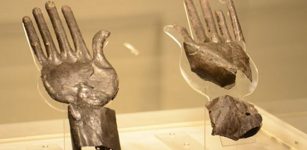 Mystery Of The Silver Hands Discovered In An Etruscan Tomb Full Of Secrets
Artifacts | Jun 12, 2015
Mystery Of The Silver Hands Discovered In An Etruscan Tomb Full Of Secrets
Artifacts | Jun 12, 2015 -
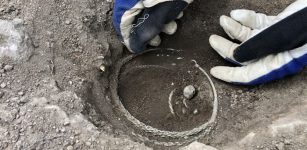 Wonderful And Unique Viking Silver Treasure Uncovered In Täby In Stockholm, Sweden
Archaeology | Nov 29, 2022
Wonderful And Unique Viking Silver Treasure Uncovered In Täby In Stockholm, Sweden
Archaeology | Nov 29, 2022 -
 Underwater Stone Age Village Habonim North Found Off Israel’s Carmel Coast Thrived During Climate Change
Archaeology | Aug 1, 2024
Underwater Stone Age Village Habonim North Found Off Israel’s Carmel Coast Thrived During Climate Change
Archaeology | Aug 1, 2024 -
 Rosicrucians: Facts And History About The Mysterious Secret Society
Featured Stories | Oct 20, 2016
Rosicrucians: Facts And History About The Mysterious Secret Society
Featured Stories | Oct 20, 2016 -
 12 Alchemy Symbols Explained
Ancient Symbols | Aug 20, 2018
12 Alchemy Symbols Explained
Ancient Symbols | Aug 20, 2018 -
 11 Ancient Submerged Canoes Found In Wisconsin’s Lake Mendota – Evidence Of A Lost Village?
Archaeology | May 27, 2024
11 Ancient Submerged Canoes Found In Wisconsin’s Lake Mendota – Evidence Of A Lost Village?
Archaeology | May 27, 2024 -
 Vishnu: Supreme, Universal Hindu God Whose Avatars Reach Nations, Cultures And Races
Featured Stories | Jul 25, 2019
Vishnu: Supreme, Universal Hindu God Whose Avatars Reach Nations, Cultures And Races
Featured Stories | Jul 25, 2019 -
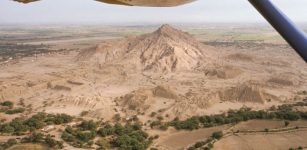 Scientists Caution Against Over-Interpreting Influence Of Climate On Cultural Change And Catastrophe
Archaeology | Aug 18, 2022
Scientists Caution Against Over-Interpreting Influence Of Climate On Cultural Change And Catastrophe
Archaeology | Aug 18, 2022 -
 Lady Trieu: Fierce Warrior, Rebel, Freedom Fighter And National Hero In Vietnam
Featured Stories | Feb 26, 2019
Lady Trieu: Fierce Warrior, Rebel, Freedom Fighter And National Hero In Vietnam
Featured Stories | Feb 26, 2019 -
 Mysterious Ancient Star People Of The Secret Power
Ancient Mysteries | Sep 12, 2018
Mysterious Ancient Star People Of The Secret Power
Ancient Mysteries | Sep 12, 2018 -
 Enigma Of Étienne Le Ray – Unusual Vagabond Prophet Nicknamed Nostradamus Of Brittany
Ancient Mysteries | May 22, 2025
Enigma Of Étienne Le Ray – Unusual Vagabond Prophet Nicknamed Nostradamus Of Brittany
Ancient Mysteries | May 22, 2025 -
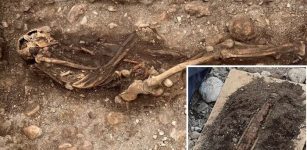 Unusual Iron Age Burial With Warrior And Sword Discovered On Gotland, Sweden – Was He From The Roman Empire?
Archaeology | Sep 7, 2021
Unusual Iron Age Burial With Warrior And Sword Discovered On Gotland, Sweden – Was He From The Roman Empire?
Archaeology | Sep 7, 2021 -
 How Pre-Industrial Communities in Northeastern Europe Adapted to Climate Changes Over the Past Two Millennia
Archaeology | Feb 3, 2025
How Pre-Industrial Communities in Northeastern Europe Adapted to Climate Changes Over the Past Two Millennia
Archaeology | Feb 3, 2025 -
 On This Day In History: Battle Of Cowpens Took Place – On Jan 17, 1781
News | Jan 17, 2017
On This Day In History: Battle Of Cowpens Took Place – On Jan 17, 1781
News | Jan 17, 2017 -
 On This Day In History: Aviator Amelia Earhart Was The First Woman To Cross The Atlantic By Air – On June 18, 1928
News | Jun 18, 2016
On This Day In History: Aviator Amelia Earhart Was The First Woman To Cross The Atlantic By Air – On June 18, 1928
News | Jun 18, 2016 -
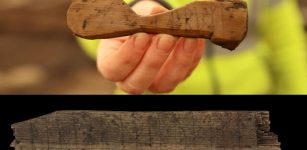 Rare Runic Inscriptions Engraved On Bone And Wood Discovered In Oslo, Norway
Archaeology | Feb 15, 2022
Rare Runic Inscriptions Engraved On Bone And Wood Discovered In Oslo, Norway
Archaeology | Feb 15, 2022 -
 On This Day In History: First Experimental Hydrogen-Filled Balloon Reaches A 900m Altitude – On August 27, 1783
News | Aug 27, 2016
On This Day In History: First Experimental Hydrogen-Filled Balloon Reaches A 900m Altitude – On August 27, 1783
News | Aug 27, 2016 -
 Mystery Of The Vanished Settlers Of Greenland – What Happened To The Lost Viking Colonists?
Books | Jul 22, 2023
Mystery Of The Vanished Settlers Of Greenland – What Happened To The Lost Viking Colonists?
Books | Jul 22, 2023



